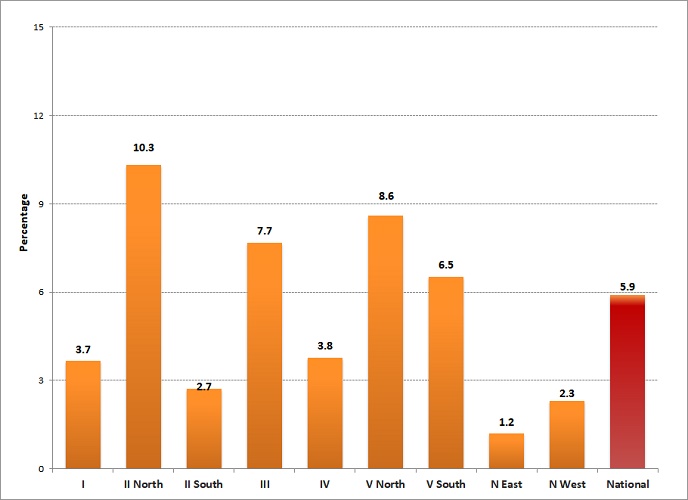 INTRODUCTION
INTRODUCTIONWHEAT
Triticum aestivum L.
The 2017/18 wheat crop season was marked by high yields in the main growing areas, as was the case in the past three seasons. On the other hand, protein content was generally low. .
| |||||||||||||||||||||||||||||||||||||||||||||||||||||||||||||||||||||||||||||||||||||||
National production is estimated at 18.445 million tons, slightly higher than 2016/17 season, with 18,340 million tons. 5,897 million hectares were planted and 5,793 were harvested. Average national yield was 3,184 kg/h, down 124 kg/h from the national average corresponding to the previous growing season. Planting was under good soil moisture; rains were above average most of the months and planting was not possible in some plots with water excess. July to September temperatures were above average. Heading occurred about 5 to 7 days earlier in certain cultivars. No strong frosts were recorded at seedling and tillering. Phosphate fertilizers were applied at planting. Nitrogen fertilization was used before planting or at planting/tillering. The incidence of foliar diseases was relevant due to predisposing factors and new races of wheat rust. There was an early attack of yellow rust that continued along the crop cycle; susceptible cultivars were very negatively affected. At the end of the cycle, in just a few cultivars, there was a light attack of stem rust, and a mild attack of wheat leaf spot, together with some fusarium A light incidence of stem bacteriosis was detected in long and intermediate-cycle cultivars. Grain filling developed under optimum temperatures along the entire period. Harvest was under regular conditions, and grain yields were very good. Some plots in subregions IIN, IIS and IV presented yields close to their potentials, with 6,000 and 7,000 kg/h averages.
SAMPLING STRUCTURE
It was agreed to take representative samples of about 4,000 tons. In total, 319 analyses. Sampling was based on areas planted in each county or department and average yields from the three last seasons, following data from the Federal Ministry of Agribusiness. The resulting estimated production was the basis to determine the number of samples to take by country or department. The idea was to have a proportional representation from each locality.
The Argentine Association of Cooperatives (ACA), the Federation of Storage Centers and Grain Handlers’ Union Entities of the Argentine Republic, Argentine Federated Farmers and the Argentine Federation of Flour Mills, through their cooperatives, storing facilities and mills contributed commercial samples that were used to create samples by locality, following instructions timely sent.
Furthermore, the Agriculture and Forestry Directorate of the Ministry of Agribusiness supported the sampling and logistics.
| |||||||||||||||||||||||||||||||||||||||||||||||||||||||||||||||||
These primary samples had to represent between 100 and 250 ton, and be selected so they reflected the zone production conditions as well as possible, being 3024 samples used for this sampling program, in such a way a sampled tonnage of 5,9 % of the national wheat production, which amounted to 18.445.322 tons, was reached
|








